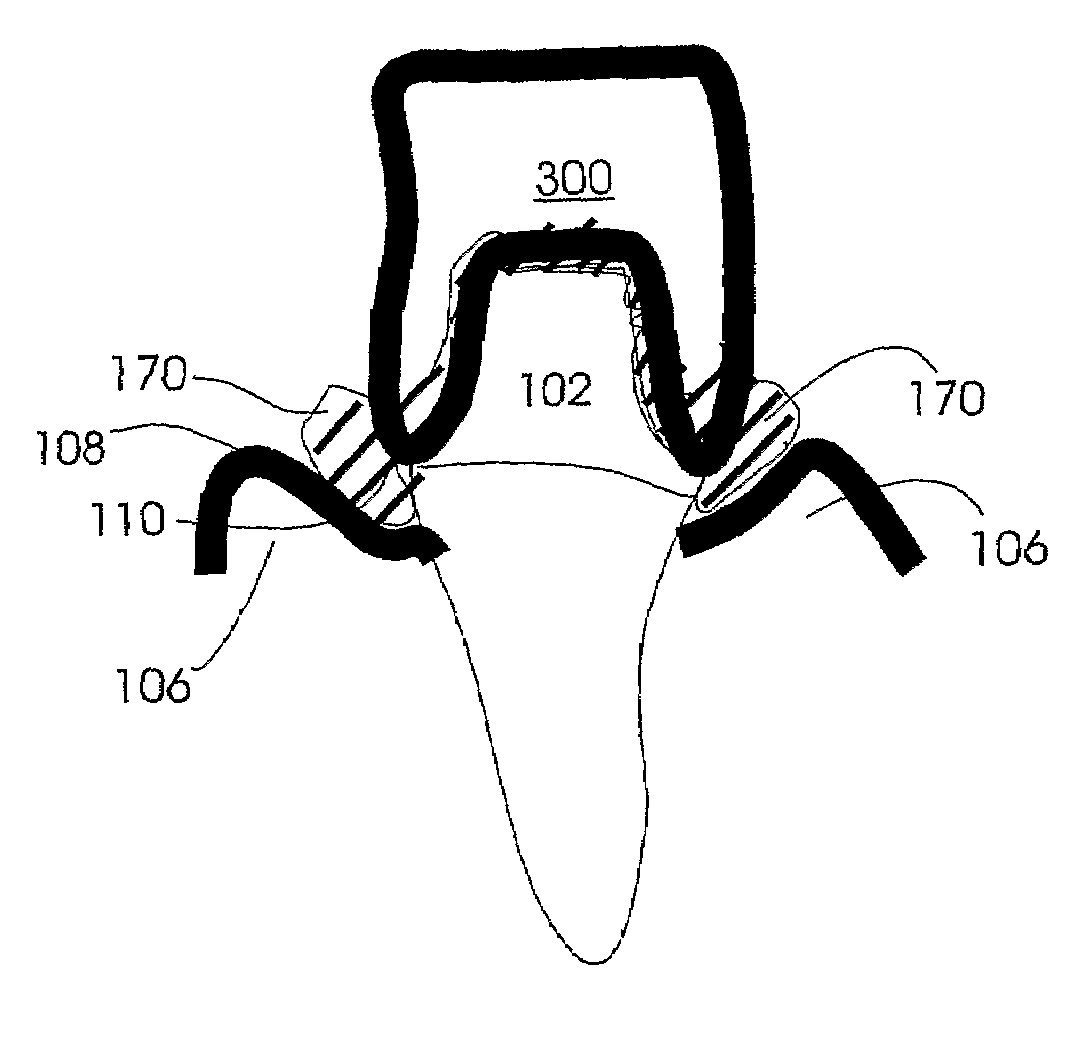Custom impression coping and methods of manufacture and use thereof
a technology of impressions and copings, applied in the field of custom impressions, can solve the problems of inaccurate impressions, more difficult parts of teeth or tooth abutments to accurately take, and interfere with the taking of impressions, etc., and achieve the effect of accurate impressions
- Summary
- Abstract
- Description
- Claims
- Application Information
AI Technical Summary
Benefits of technology
Problems solved by technology
Method used
Image
Examples
Embodiment Construction
[0114]FIG. 1a illustrates the fabrication of a custom impression coping 2 which has been fabricated by placing an unset retraction / impression material 3 into a set or hardened preliminary impression 340, which has been fabricated by taking an impression of the tooth to be prepared 100 including the adjacent teeth 97 and 98, using an impression material contained in an impression tray 341. The unset retraction-impression material 3 has been placed into the cavity 2 corresponding to the prepared tooth abutment 102 of the preliminary impression 340 and then the impression tray 341 is replaced back over the teeth compressing the unset retraction / impression material 3 over the prepared tooth abutment 102 and into the sulcus 110, thereby capturing the form of the abutment 102, the abutment margins 104 and 105. The retraction / impression material 3 is placed only in the cavity corresponding to the prepared tooth abutment 102. The cavity 4 of the adjacent teeth is not filled with the retract...
PUM
 Login to View More
Login to View More Abstract
Description
Claims
Application Information
 Login to View More
Login to View More - R&D
- Intellectual Property
- Life Sciences
- Materials
- Tech Scout
- Unparalleled Data Quality
- Higher Quality Content
- 60% Fewer Hallucinations
Browse by: Latest US Patents, China's latest patents, Technical Efficacy Thesaurus, Application Domain, Technology Topic, Popular Technical Reports.
© 2025 PatSnap. All rights reserved.Legal|Privacy policy|Modern Slavery Act Transparency Statement|Sitemap|About US| Contact US: help@patsnap.com



